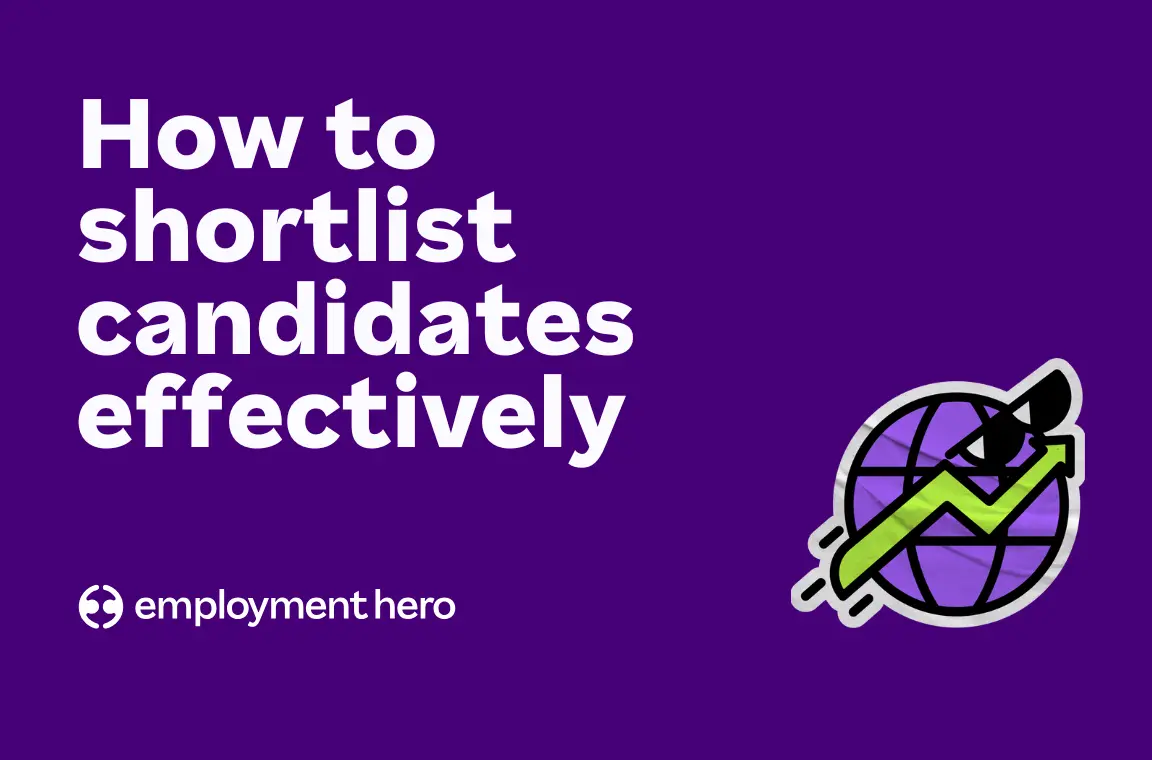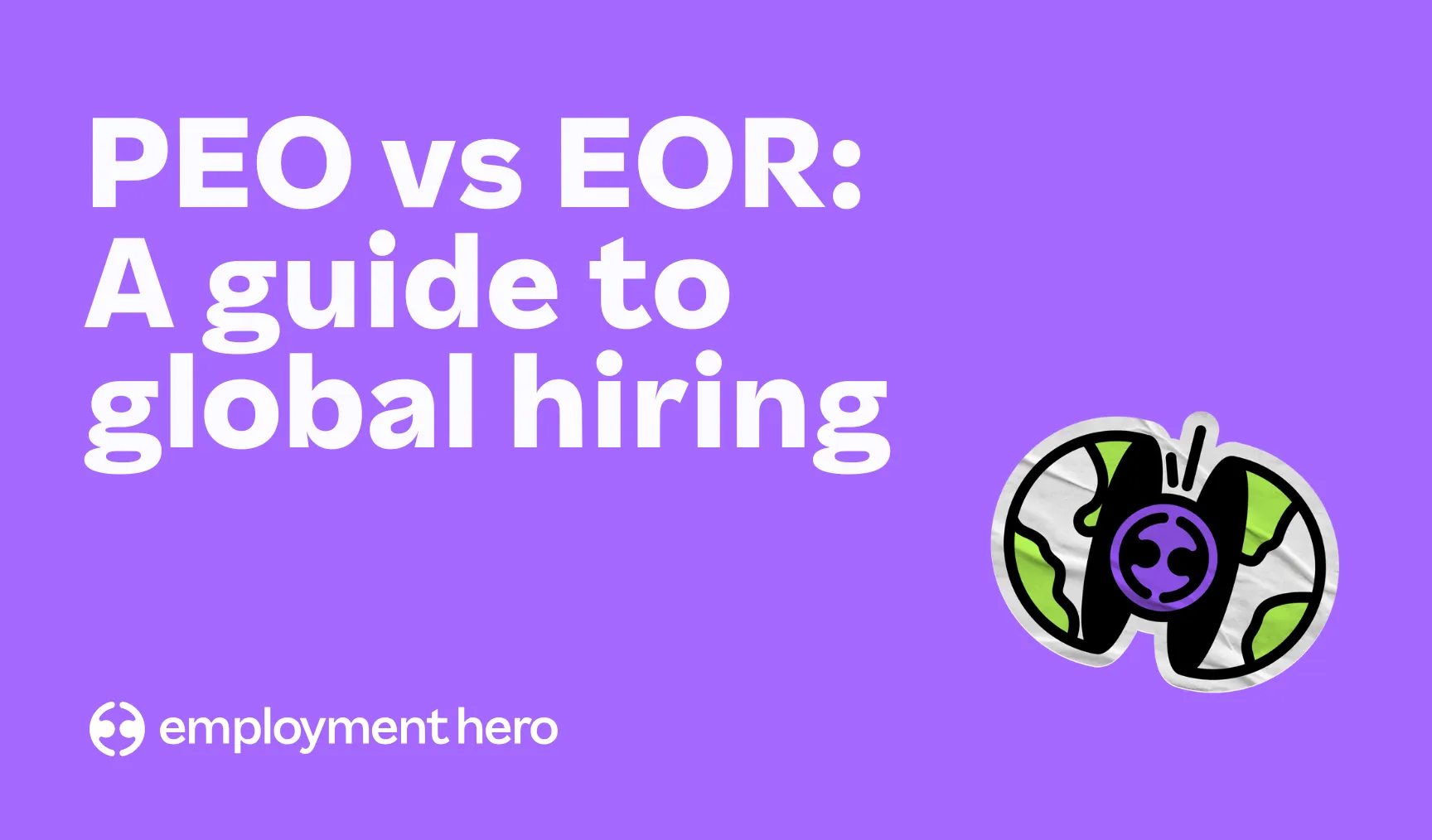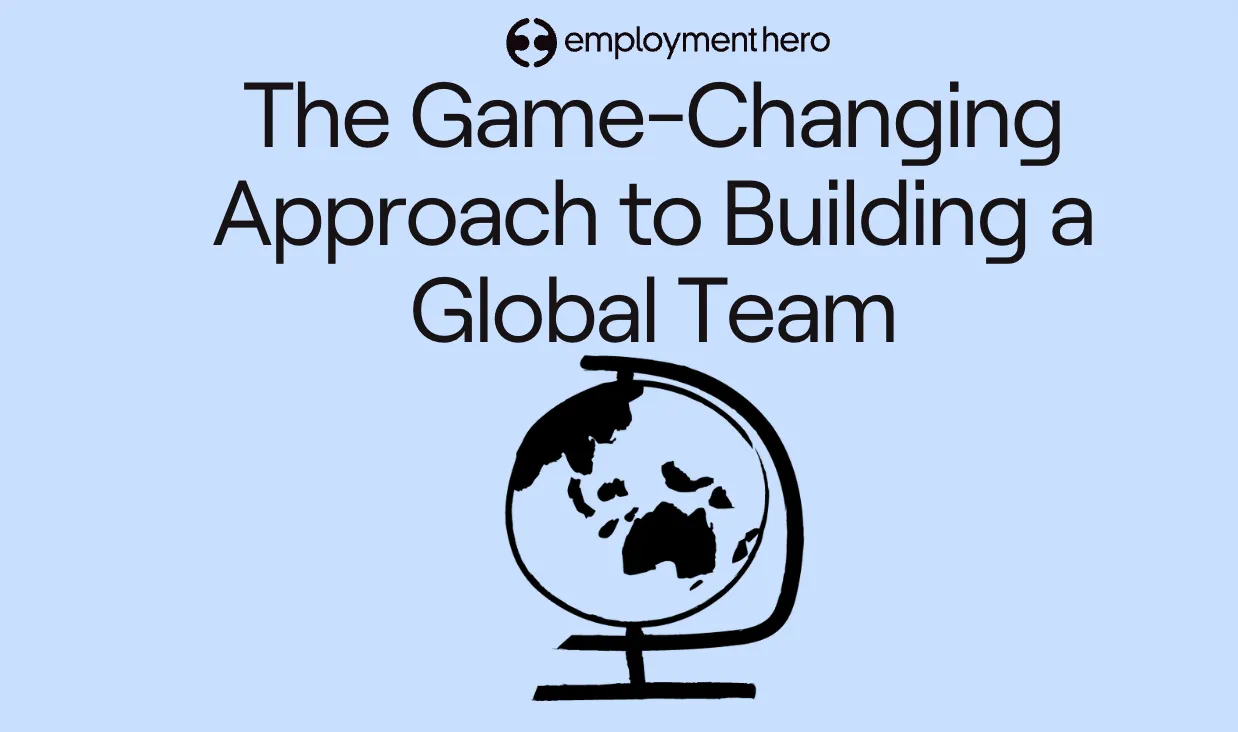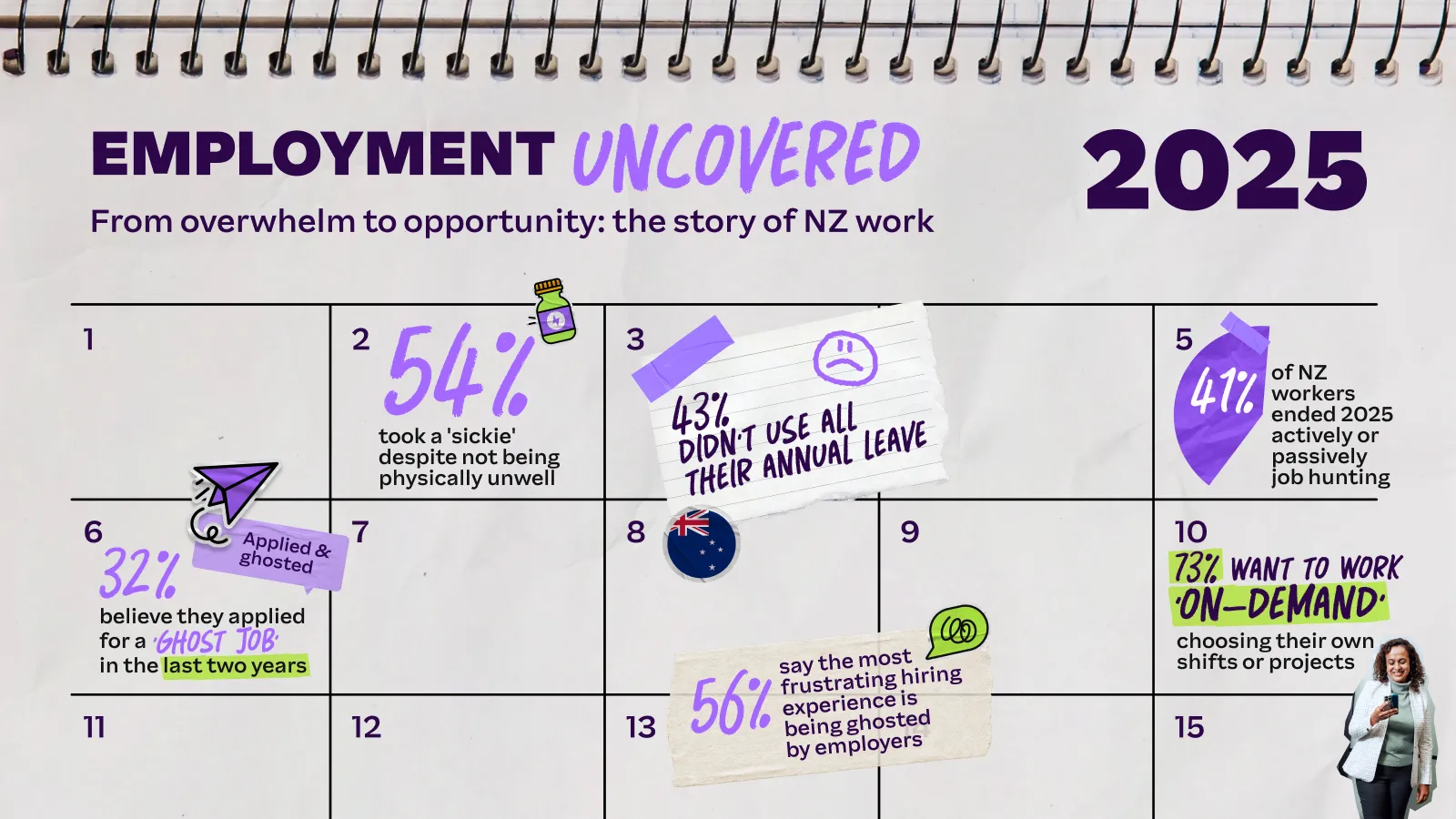How to shortlist candidates effectively: A hiring guide for employers
When you’re faced with hundreds of CVs, how do you spot the needle in the haystack? It’s a daunting task – but with the right approach, you’ll be able to nail the shortlisting process in no time. Let’s look at how.
-

Julia Boraston

Contents
According to recent Employment Hero research, the real challenge for employers isn’t necessarily finding candidates. It’s dealing with too many. In fact, some told us they were receiving up to 200 applications for a single role. The problem? Quantity doesn’t always mean quality.
That’s why you need a clear, strategic approach to shortlisting that helps you cut through the noise and focus on the right people, quickly. And crucially, you need to understand your legal obligations so you can protect yourself (and your hiring managers) from any compliance risks during shortlisting.
We’re here to show you how. Let’s get to it.
Start here: refresh your knowledge of the law
The essential first step to shortlisting candidates is making sure you’re across your legal obligations. This process should come well before the shortlisting process itself, as it will help protect you and any hiring managers from potential compliance issues. Here’s a brief round up of the areas you need to stay across.

Right to work
This is a big one. In New Zealand, only citizens, Australian citizens, and Australian permanent residents can work without a visa. All other individuals require a valid work visa. Always verify a candidate’s right to work with their consent using Immigration New Zealand’s VisaView service.
Protected characteristics
New Zealand law prohibits discrimination based on protected characteristics such as race, age, sex, disability, religion, and more.
Your hiring process, from the job ad to shortlisting, hiring, onboarding and beyond, must not discriminate against any of these characteristics. Make sure your hiring managers are across these obligations, and ensure you have checks and balances in place throughout your hiring process.
Candidate privacy and data protection
Under the Privacy Act 2020, candidate data must be collected lawfully, kept secure, and used only for recruitment purposes. Share your privacy practices clearly – on your job ad, careers page, or privacy statement – and limit access to candidate data to relevant staff only.
Need more support? Our Hiring Compliance Guide provides a comprehensive list of the relevant laws you need to be across when hiring, plus essential ‘do’s and don’ts’ to keep you on track. You’ll also find an editable candidate scorecard you can use to ensure fairness and objectivity throughout the shortlisting process. And if you’re still not sure, our HR advisory service is ready when you are.
How do I shortlist candidates efficiently and fairly?
According to our State of Recruitment report, the time-to-hire for many Kiwi Small-to-Medium Enterprises (SME) is typically 29 days, at a whopping cost of more than $6,000. To reduce costs and save yourself time, you need to define your criteria upfront and then create a structure to make the process as efficient as possible.
Let’s first look at how to define your criteria, before moving on to creating a structure that’s fast, fair and repeatable.

How to define your shortlisting criteria
There’s several factors to consider when you’re building out your shortlisting criteria. From non-negotiable requirements like licenses or certificates, to experience that’s advantageous but not necessarily required, the best candidates will tick a few boxes across the categories below.
Essential and desirable criteria
Start by separating your must-haves from your nice-to-haves. Essential criteria are non-negotiables that applicants must meet to be considered qualified candidates. For example, a valid driver’s licence might be mentioned in the job description as essential for a delivery role, while experience with a specific software could be desirable.
Keeping this distinction clear ensures fairness and prevents good candidates from slipping through the cracks and keeps unqualified candidates from progressing.
Hard skills and soft skills
Hard skills are the technical abilities or qualifications needed to do the job, like coding, writing, or using specific software. Soft skills like communication, adaptability or teamwork are just as important, especially for collaborative roles. They’re also highly transferable skills, which is crucial to consider if a candidate doesn’t necessarily have all the hard skills you’re looking for, but shows the potential to learn.
For instance, a graphic designer might need proficiency in Adobe Creative Suite (hard skill) and the ability to take constructive feedback (soft skill). The best candidates offer the right mix of both.
Tip! Attracting candidates with the right balance of hard and soft skills is tricky, especially when you’re competing with larger businesses. The good news is, you don’t need to outspend the big guys: you just need to outsmart them. Find out how in the Business Owner’s Guide to Competing for Top Talent.
Culture-add and values alignment
Finding someone who adds to your workplace culture isn’t about hiring people who are the same; it’s about finding those who align with your company’s values and ways of working. Look for indicators in their experience or cover letter that suggest they’d thrive in your environment.
For example, if collaboration is one of your values, a candidate who highlights cross-functional teamwork is likely a strong match. Just be careful not to let “culture fit” become an inadvertent shortcut for personal preference or bias.
Establish a structure and process for shortlisting
Once you know what criteria you’re looking for, it’s time to create a supporting structure around it that ensures you’re well set up with an efficient shortlisting process.

Build a consistent shortlisting rubric
This should include the non-negotiable criteria you identified earlier, such as required qualifications, experience, and capabilities, along with any desirable attributes that will set applicants apart. Assigning a weighted score to each criterion can help reduce unconscious bias and make it easier to justify decisions, particularly if you’re asked to explain your rationale later.
Psst! Our all-in-one hiring solution automates this process to ensure consistency at every stage.
Decide who will be involved in shortlisting
Involving more than one person can provide different perspectives and reduce individual bias. Make sure each assessor uses the same rubric and reviews candidates independently before comparing notes.
Document the entire shortlisting process
This not only ensures transparency and fairness, but also provides protection in the event of disputes or audits. With a clear, repeatable structure in place, you’ll be in a much stronger position to identify the right talent and move quickly before they’re snapped up elsewhere.
An Applicant Tracking System (ATS) is a great tool to help you manage applicants, from the initial application to screening, shortlisting and hiring. It’s also a great way to ensure that all the relevant hiring managers have visibility over the process, including important candidate notes.
How many candidates should you shortlist?
There’s no one-size-fits-all number when it comes to shortlisting candidates – it depends on the size of your applicant pool, the complexity of the role, and the resources you have available for interviews.
However, a good rule of thumb is to aim for around 3 to 5 strong candidates for each vacancy. This gives you enough variety to make a confident decision without overwhelming your hiring team.
Hiring now? Get automatically matched with your ideal candidates with our free hiring tool.

How to manage unsuccessful candidates after shortlisting
It’s important to leave a good impression, even with candidates who didn’t make the shortlist. A simple, polite message to let them know they weren’t successful this time goes a long way.
If you think they showed potential, you can offer to keep their CV on file for future opportunities; just make sure to ask for their permission first, to stay in line with privacy laws.
When possible, consider offering a bit of feedback. You don’t need to go into great detail, but a quick note about what stood out or where they might improve can be really valuable. Treating people with respect, even when you’re saying no, helps build a strong employer brand – and might bring great candidates back down the track.
Build shortlists while you sleep with the Employment Operating System
Clearly, there’s a lot to consider when shortlisting. It’s not just a matter of choosing the person you like most (in fact, that’s a recipe for disaster!). But keeping across legal obligations as well as the job criteria itself can quickly become overwhelming. That’s why we designed the Employment Operating System to do it all for you.
With the Employment OS, you can instantly post job ads, get automatically matched with candidates who meet your non-negotiables, shortlist, chat, hire and onboard all from the same place. And it doesn’t end there.
Assign digitised, customisable workplace policies and training modules, approve shift and leave requests, complete accurate pay runs and keep all your records safe and secure.
If you’re ready to transform the way you shortlist and beyond, book a demo today.
Related Resources
-
 Read more: PEO vs. EOR: A guide to global hiring
Read more: PEO vs. EOR: A guide to global hiringPEO vs. EOR: A guide to global hiring
Learn the key differences between a PEO and an EOR. Discover why an EOR is the smarter, safer way to…
-
 Read more: How to build a global team without a local entity
Read more: How to build a global team without a local entityHow to build a global team without a local entity
Learn how to streamline your hiring and expand your NZ business globally with an Employer of Record (EOR) without the…
-
 Read more: Employment Uncovered: Inside the Story of New Zealand Work in 2025
Read more: Employment Uncovered: Inside the Story of New Zealand Work in 2025Employment Uncovered: Inside the Story of New Zealand Work in 2025
Inside the story of NZ work in 2025. From rising ‘sickies’ to hiring fatigue, see how Kiwi work patterns are…





















